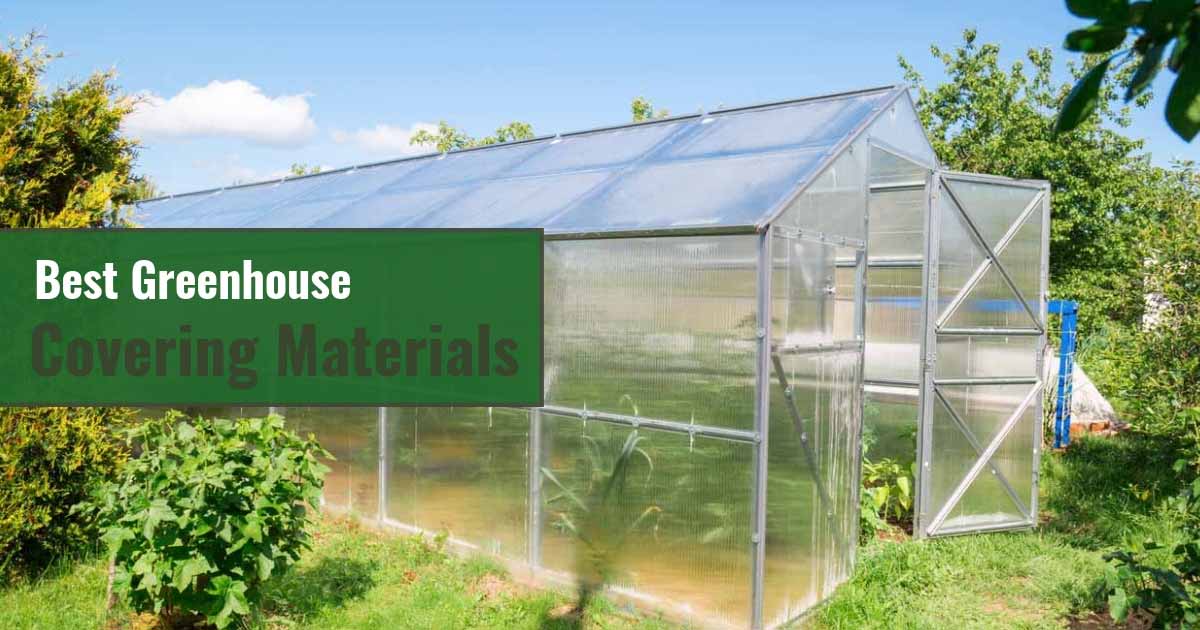If you’re looking for ultimate customizability, then building your own greenhouse from scratch is the way to go. However, designing a greenhouse can be an overwhelming process; there are so many different decisions to make, from selecting the perfect location to deciding which accessories to include. Arguably, one of the most important decisions you’ll have to make has to do with selecting the type of covering for your new greenhouse.
Of the many different materials you could use as a greenhouse covering, there are four that have stood the test of time: tempered glass, polycarbonate, polyethylene plastic (or poly film), and Solexx greenhouse covering. These greenhouse covering materials vary in terms of light transmission, light distribution, insulation, durability, cost, and maintenance. Ultimately, the best option for you is the one that best meets your needs and preferences for your greenhouse structure.
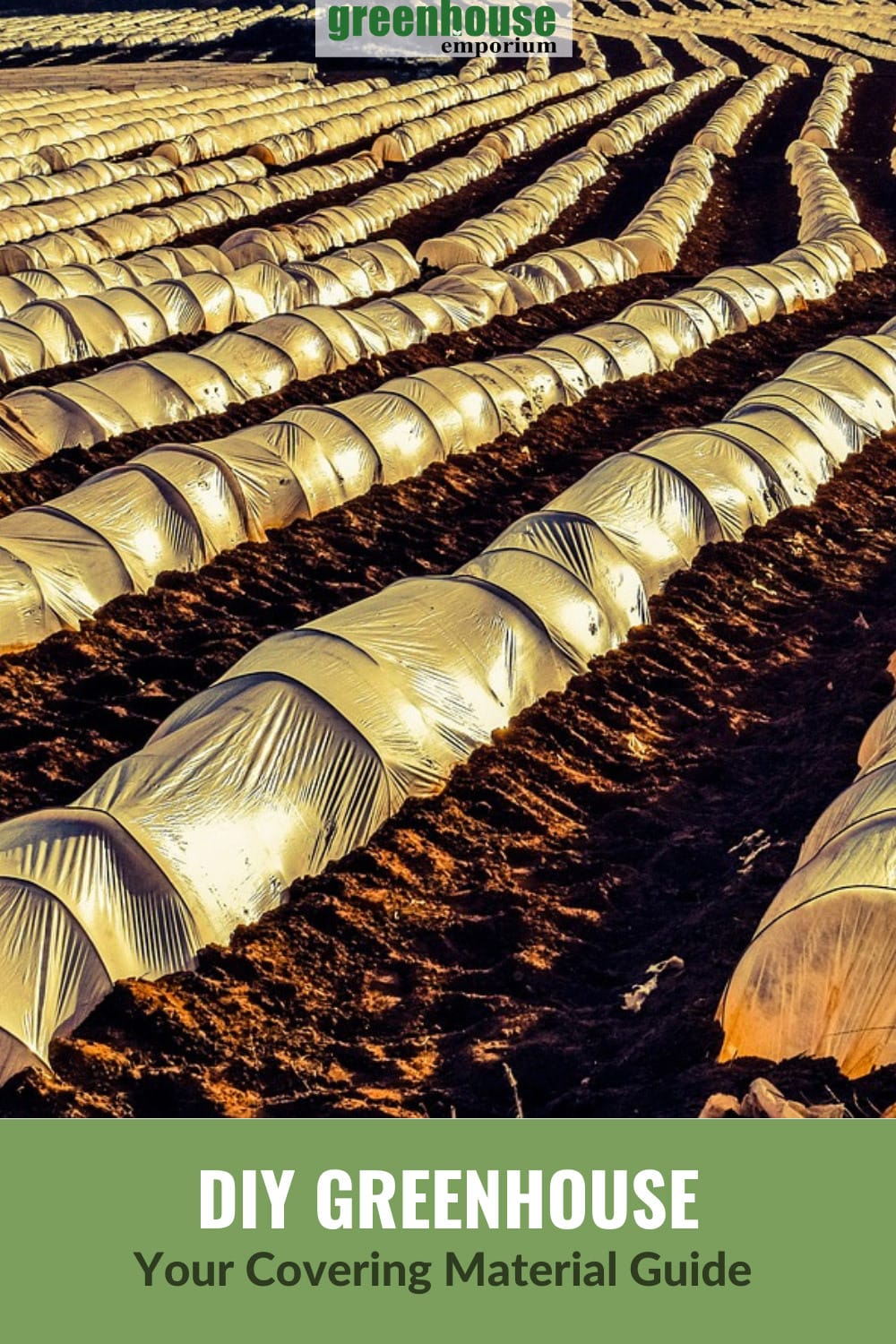
To help you better understand which greenhouse covering material is best for your DIY greenhouse, we walk you through the different factors to consider. We’ve also included the pros and cons of these top greenhouse covering materials so that you can create the greenhouse of your dreams!
An Overview: Best Greenhouse Covering Materials
| Material | Light Transmission | Light Diffusion | Insulation (R-value)* | Durability | Cost per sq. ft. | Maintenance |
|---|---|---|---|---|---|---|
| Tempered glass | Best | Poor | 0.95 | Best | $2.50 – $3.50 | Medium |
| Polycarbonate | Good | Good-Best | 1.43-2.30 | Good | $1.60 – $3 | Medium |
| Polyethylene film | Great | Good | 0.83 | Poor | $0.10 – $0.50 | High |
| Solexx | Good | Best | 2.1-2.3 | Good | $2.00-3.80 | Medium |
Factors to consider when selecting a material
There are pros and cons to each of the greenhouse covering materials; there is no single best option for everyone. Therefore, understanding your growing needs and preferences (including your vision of your DIY greenhouse) is crucial to picking the best greenhouse covering material for you.
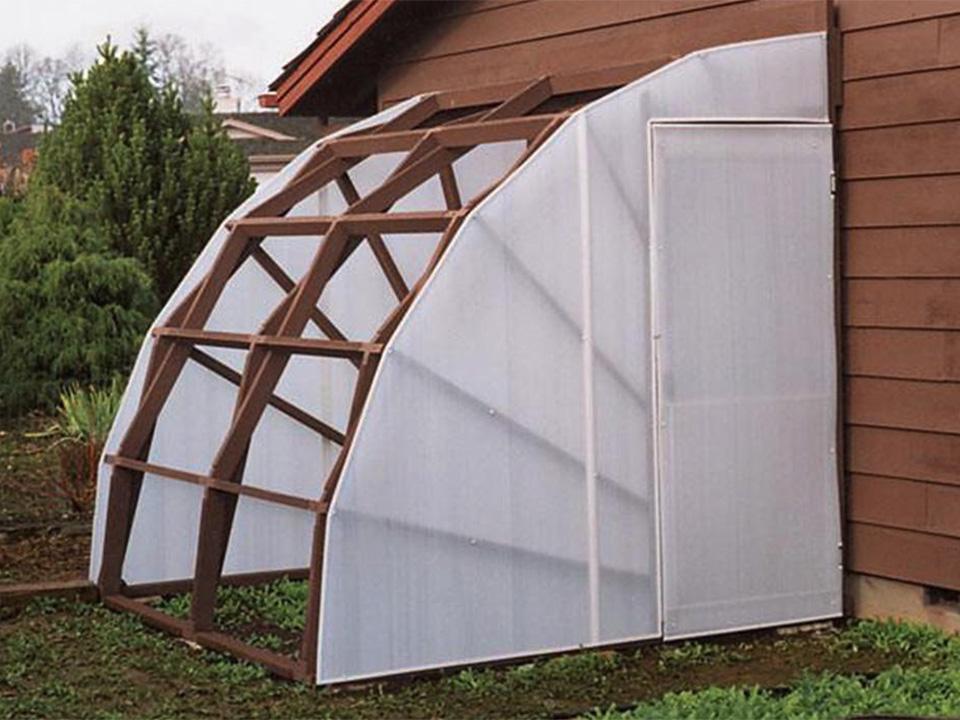
Below are the most important factors to consider when selecting a covering material:
Light transmission
Arguably one of the most important aspects of a greenhouse covering material is its ability to transmit light to the plants inside, for without light, plants can’t photosynthesize! Generally, a more transparent material is better at transmitting light. Therefore, crystal-clear glass ranks number one at light transmission.
However, that doesn’t necessarily mean that the best greenhouse material is the one that transmits the most light. How can this be? If you want to grow tropical or shade-loving plants in your greenhouse, less light transmission would be desirable. Similarly, if you live in a hot or desert climate, too much sun can scorch plants inside a greenhouse, particularly young seedlings.
Light diffusion
When it comes to light reaching your plants, light transmission is not the only factor to consider; light diffusion is equally important! In short, light diffusion is light scattering. This is something that happens naturally with clouds, which is why even though sunlight is less intense on a cloudy day, you can still get sunburnt.
When it comes to greenhouses, light diffusion is beneficial because it allows more light to reach below the upper canopy. In other words, it allows for more photosynthesis and therefore leads to better overall plant growth. Additionally, diffuse light prevents hot spots, which could cause plants to burn.

However, light diffusion could be detrimental in low light, so if you want to grow during the winter it might be better to select a glazing material with less light diffusion, and use shade cloths if necessary during the summer.
Insulation
If a year-round greenhouse is your dream, then insulation is an important factor to bear in mind. To save on heating costs in colder climates, it is best to select a material that has good insulation, or a high R-value.
By contrast, insulation may not be important if you only plan to grow during the warmer months, or if you live in a hot climate. In this case, a lower R-value may be better, paired with excellent ventilation.
Durability
Another important factor to consider is the durability of the covering material you select for your DIY greenhouse. If you want your greenhouse to last for years to come, it’s important to choose a material that is durable and can withstand harsh weather conditions. On the other hand, if your DIY greenhouse will be temporary or seasonal, then durability is less important.
Cost
Building your own greenhouse is a great way to save money, but that doesn’t necessarily mean you should choose all of the cheapest building materials. In the long run, cheap materials could end up costing you more because they are often less durable and need to be replaced more often.
Luckily, you can still build a great greenhouse within budget constraints. For example, you can source high-quality materials at a local reclaim store or through online classifieds sites such as Craigslist.
Maintenance
Finally, you’ll want to bear in mind that certain glazing materials require more frequent maintenance than others. Poly film, for instance, could tear and require patching. Rigid glazings such as glass and polycarbonate should be washed periodically to remove dirt and debris, which reduce light transmission. Meanwhile, glazings that scratch easily, such as polycarbonate, should be kept free from tree branches.
The different kinds of greenhouse covering materials
The best greenhouse covering materials are all capable of protecting your plants from the elements. However, there are pros and cons to each type due to the variations in light transmission, light diffusion, insulation, durability, cost, and maintenance.
Tempered glass
Traditionally, greenhouses were made with glass because that was the only material available that allowed natural light through. Today, you see more and more greenhouses being built with different types of plastic coverings, which tend to be less expensive than glass. However, glass greenhouses still stand the test of time thanks to their beautiful, crystal-clear appearance and unbeatable light transmission.
Clear, single-pane glass transmits nearly 100% of UV light, which is essential for healthy plant growth. This level of light transmission is particularly useful if you plan to grow through the winter in a mild climate and want to make the most of the limited daylight.
Pros of glass covering:
- High light transmission
- Crystal-clear, aesthetically-pleasing appearance
- High durability
- Low to medium maintenance (maintenance varies depending on how hard your water is)
Cons of glass covering:
- Higher costs
- Heavy
- Low light diffusion
- Low insulation
Polycarbonate
Today, many greenhouse growers consider polycarbonate one of the best plastic greenhouse covers. Compared to glass, polycarbonate plastic greenhouse covering is less clear in appearance, but comparable in terms of durability.
There are a few different types of polycarbonate you can choose from for greenhouses. Twin-walled polycarbonate rigid panels are the most popular, ranging in thickness from 8mm to 10mm. Triple-wall polycarbonate panels are less common, but have a higher insulation value, making them appropriate for areas that regularly experience extreme weather conditions.
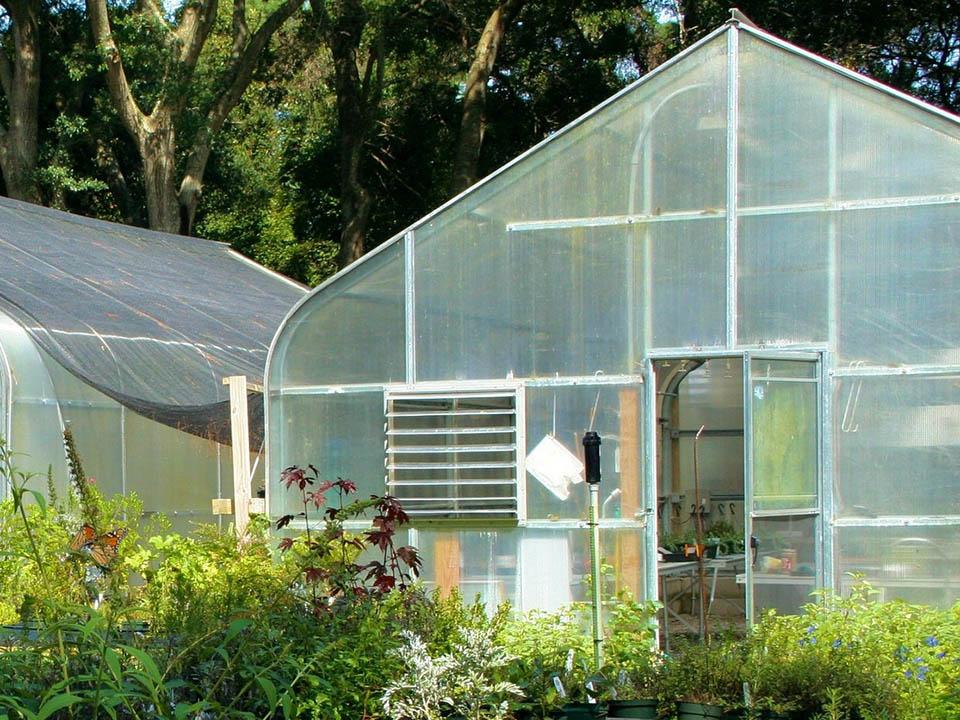
When maintained properly, polycarbonate plastic covering can last for ten years or more. Maintenance may include: performing an annual cleaning, removing debris when necessary, making sure no tree branches are able to scratch the panels, applying UV protectant film (if the panel doesn’t include one), and replacing broken or damaged panels.
Pros of polycarbonate covering:
- Good light diffusion
- High durability
- Lightweight
- Economical
- Good to excellent insulation
Cons of polycarbonate covering:
- Require regular maintenance/cleaning
- Not crystal-clear in appearance
Polyethylene plastic (poly film)
Polyethylene plastic (also known as poly film) is a common greenhouse plastic sheeting, especially for seasonal hoop-houses or commercial greenhouses. Poly film is not only the most inexpensive type of greenhouse covering, it is also lightweight and usually comes in a roll, making it easy to work with for DIY projects.
There are two kinds of plastic strengths in polyethylene to be aware of. Large industrial projects usually use commercial-grade polyethylene, but it can be hard to come by. The most common type of greenhouse poly film is utility-grade, which is the recommended strength to use for small- or medium-sized DIY greenhouses.
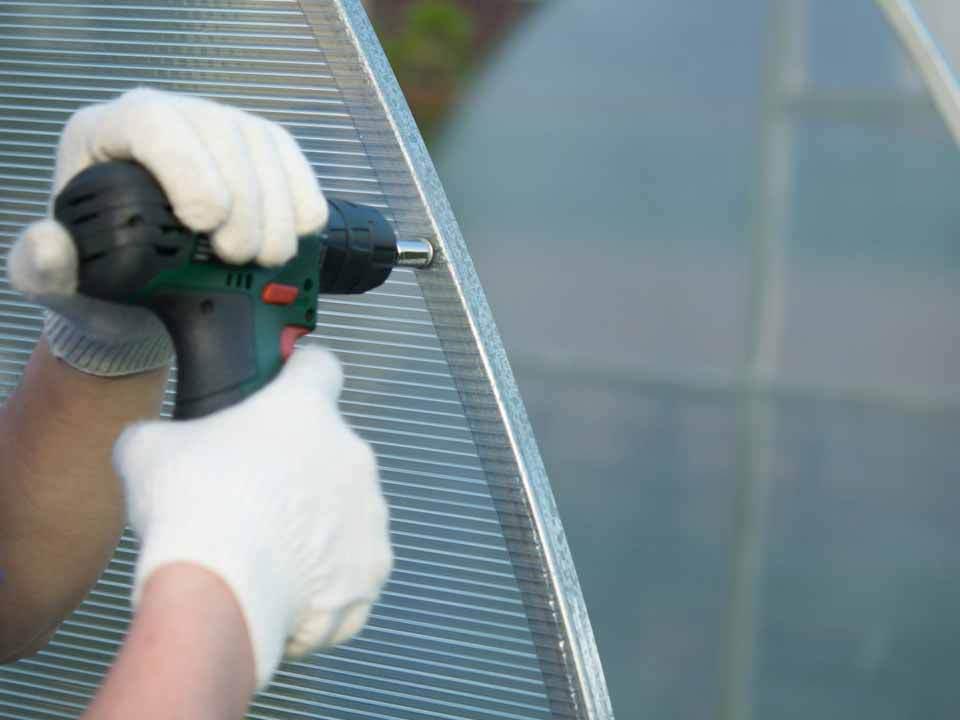
When properly maintained, poly film can last 2-3 years. UV-protected poly film may last up to 4-5 years or more. Unlike glass and even polycarbonate, poly film will start to discolor with time. In addition, the film becomes more brittle, making tears more likely. A poly repair kit is a handy thing to have around the greenhouse as a way of mending small tears, but eventually the entire covering may need to be replaced.
Pros of polyethylene covering:
- Most affordable option
- High level of light transmittance
- Lightweight
- Easy to use for seasonal or temporary greenhouses
Cons of polyethylene covering:
- Not very durable; may need to be replaced after 2-3 years
- Low insulation
- Not a clear plastic
Solexx
Solexx panels are a type of twin-wall panel made of polyethylene. Similar to polycarbonate greenhouse panels, Solexx panels come in two thicknesses: 3.5mm and 5mm. The 3.5mm panels offer an insulation R-value of 2.10 while the 5mm panels offer an insulation value of 2.30. In comparison, a standard 6mm twin-wall polycarbonate panel has an R-value of 1.54.
Solexx offers a 10-year warranty for all of its glazing products, so you can rest assured they are high quality.
Note that a higher insulation is not always better. If you live in a warm climate, the higher R-value may cause your greenhouse to heat up too much, requiring additional ventilation or cooling, which can be costly. By contrast, the added insulation is invaluable if you want to grow during the winter in a cool climate.
Pros
- Good light transmission
- Excellent light diffusion
- Good to excellent insulation
- High durability
- Lightweight
Cons
- Higher cost
- Require regular maintenance/cleaning
- Not crystal-clear in appearance

